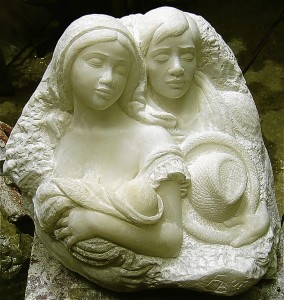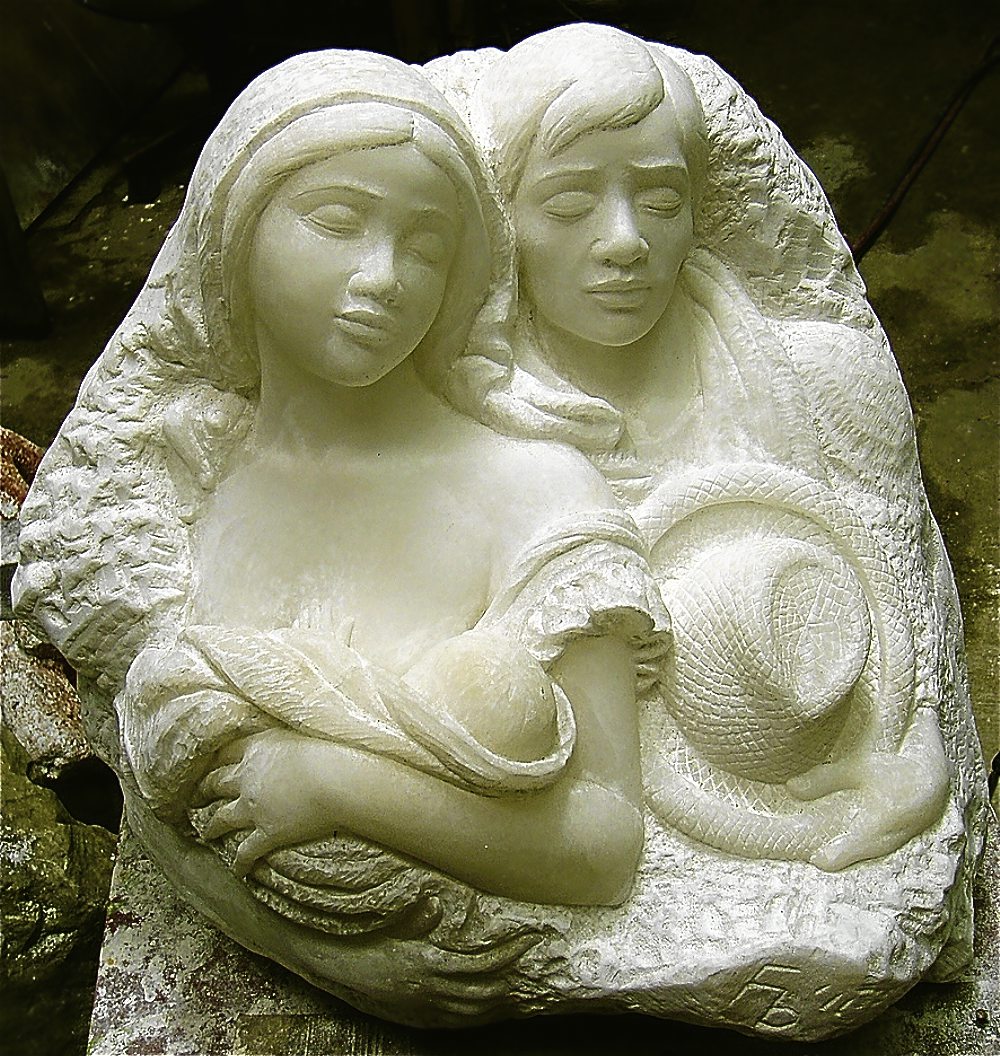 The invitation to the 7th Annual Sculpture Review bears the image of a work by Maria Magdamit set against a dark bare space; the piece had been toughened with a high-fire kiln. Magdamit’s method is apt because the high temperatures essential in sculpting evoke the Promethean spell where sculpting prowess results in three-dimensional artworks that are much coveted.
The invitation to the 7th Annual Sculpture Review bears the image of a work by Maria Magdamit set against a dark bare space; the piece had been toughened with a high-fire kiln. Magdamit’s method is apt because the high temperatures essential in sculpting evoke the Promethean spell where sculpting prowess results in three-dimensional artworks that are much coveted.
The 2011 sculptural showcase will be held at the Art Center in Megamall. Curated by Rica Estrada, the show features works of 45 artists: Mulawin Abueva, National Artist Napoleon Abueva, Carlo Arranton, Ral Arrogante, the Baldemors (Fred and Wilson William), Benjie Bisaya, Michael Cacnio, the Caedos (Anastacio, Florante and Frederick), Henri Cainglet, Roen Capule, Buddy Ching, Aba Dalena, Joe Datuin, Daniel de la Cruz, Danny Rayos del Sol, Noel El Farol, National Artist Abdul Mari Imao, Juan Sajid Imao, Maria Magdamit, Carlo Magno, Jordan Mendoza, Chris Murillo, Andre Odavar, Ramon Orlina, Carlito Ortega, Agi Pagkatipunan, Al Perez, Mervy Pueblo, Ton Raymundo, Rodel Rillera, Omi Reyes, Rene Robles, Jinggoy Salcedo, Lirio Salvador, Jonahmar Salvosa, Solomon Saprid, Susanito Sarnate, Manolo Sicat, Kelly Sonio, Adeo Sta. Juana, Calude Tayag and Ian Valladares.
Collectors will be spoilt for choice and sculpture followers will have their fill with the spectrum of media and styles. Magdamit’s work, for instance, combines the labor of her hands with sea glass, and are finished with glazes in high heat, turning out figures that appear to be made of sand or earthen clay.
Magdamit’s paean to the environment can be described as “earthereal”; the sculptress has formed nature deities that either embody the seabed with their skin accented by surprisingly delicate barnacles, or seem to emerge out of the forest floor embellished with beautiful lichen.
The “Diwata,” or “nature goddess” series is also linked to the artist’s line of wearable art, a collection of fantastic necklaces, earrings, and cuffs.
Functionality is also behind Rene Robles’ work, a predominantly red chair with differently colored legs, seat and backrest on which, at first glance, are elongated openings that have been roughly hand-carved or simply painted.
Baldemors, Orlina
Carved out of alabaster is Fred Baldemor’s Filipiniana couple earnestly pausing for “Orasyon,” or early-evening prayer, while the woman breastfeeds her child and the man has his straw hat off in a gesture of respect. Also in Italian alabaster are the abstract “Novus Cirque” and “Heartbinds” by the younger Baldemor, Wilson William, whose large-scale ouvre at Triangle Drive in Bonifacio Global City displays the same smoothly curved continuity.
Smooth surfaces still figure in Orlina’s signature green ice with clever indentations to his iceberg-like “Tranquility in Strength,” where the crevices are aided by light in endowing the piece with seemingly changing accents.
 Playing quite a visual trick in Adeo Sta. Juana’s “Alon” are the water bowls. Inside, the basins are painted blue to mimic the sea; an outrigger canoe is made to appear as though it is afloat when it is actually suspended by lines attached to the edges of the concave structure.
Playing quite a visual trick in Adeo Sta. Juana’s “Alon” are the water bowls. Inside, the basins are painted blue to mimic the sea; an outrigger canoe is made to appear as though it is afloat when it is actually suspended by lines attached to the edges of the concave structure.
Metals are featured in Daniel de la Cruz’s voluptuous yet light-footed woman in “Taking Flight,” and Ral Arrogante’s tech-refuse mobiles, while Claude Tayag continues his experiments with highly polished handsome hardwood.
The beautiful variety of sculptures is joined by the pieces of the celebrated Solomon Saprid whose sculptures are prominently displayed locally and abroad. Across the National Museum can be found his “Gomburza,” among many of his riveting works. He also has monuments in the US, Germany, Australia, Hong Kong and Thailand.
His name is synonymous with renditions of the tikbalang, the mythical figure of the Philippine netherworld that has the head of a horse and the body of a human. The tikbalang in this show is seen reclining; it is made of jade. It is unusually curved for a Saprid, quite a rare composition.
Saprid’s characteristic angular metal strips made otherworldly by stylized soldering do not form the mythical creature here, but rather, a woman in Maria Clara garb, in mid-step as if dancing, complete with abanico. The delightful irony seems perfectly synchronized with a presentation of the artist’s sketches at Gallery Nine (tel. 9108016).
Though the subjects in two dimensions are of a more delicate nature, Saprid depicted them in his cubist hand. Instead of curves, the angles are pronounced; but the nubile nudes are not denied softness and the nursing mother and her infant look tender.
As with the 3D Maria Clara, the drawn singkil dancer is lent dynamic but graceful movement by the edgy lines.
The rare collection of illustrations unveiled by the Saprid family reaffirms that the artist fondly called “Mang Sol” was consistent in his ironies.
E-mail author at [email protected] for comments.









































